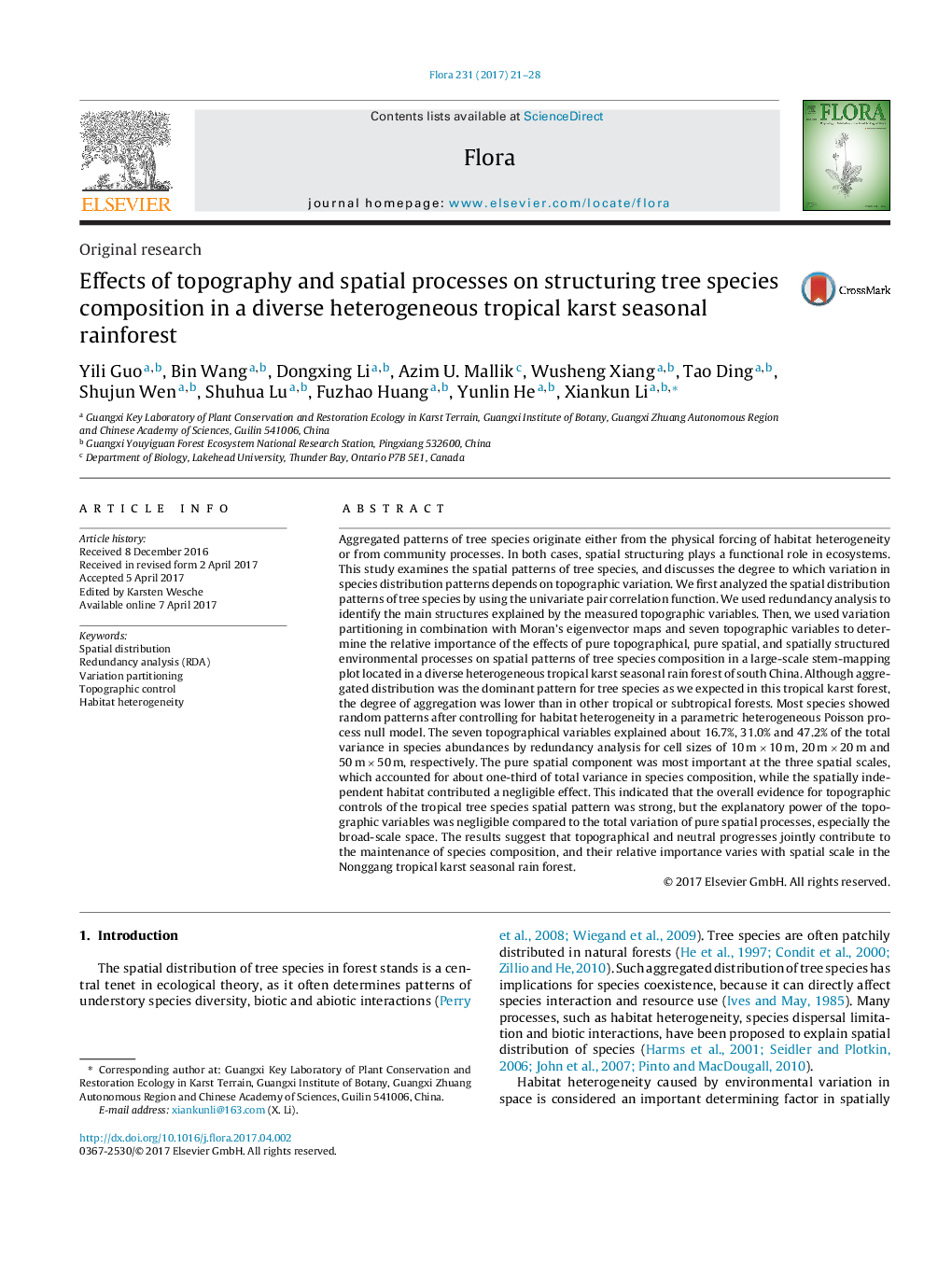| کد مقاله | کد نشریه | سال انتشار | مقاله انگلیسی | نسخه تمام متن |
|---|---|---|---|---|
| 5532480 | 1549928 | 2017 | 8 صفحه PDF | دانلود رایگان |
- Most tree species showed heterogeneous Poisson spatial patterns.
- With the increase of spatial scale, the total variance that explained by topographical variables was increased.
- The spatial variation in community composition was only evident at broad-scale, but was negligible at fine-scales encompassed by our study design.
Aggregated patterns of tree species originate either from the physical forcing of habitat heterogeneity or from community processes. In both cases, spatial structuring plays a functional role in ecosystems. This study examines the spatial patterns of tree species, and discusses the degree to which variation in species distribution patterns depends on topographic variation. We first analyzed the spatial distribution patterns of tree species by using the univariate pair correlation function. We used redundancy analysis to identify the main structures explained by the measured topographic variables. Then, we used variation partitioning in combination with Moran's eigenvector maps and seven topographic variables to determine the relative importance of the effects of pure topographical, pure spatial, and spatially structured environmental processes on spatial patterns of tree species composition in a large-scale stem-mapping plot located in a diverse heterogeneous tropical karst seasonal rain forest of south China. Although aggregated distribution was the dominant pattern for tree species as we expected in this tropical karst forest, the degree of aggregation was lower than in other tropical or subtropical forests. Most species showed random patterns after controlling for habitat heterogeneity in a parametric heterogeneous Poisson process null model. The seven topographical variables explained about 16.7%, 31.0% and 47.2% of the total variance in species abundances by redundancy analysis for cell sizes of 10 m Ã 10 m, 20 m Ã 20 m and 50 m Ã 50 m, respectively. The pure spatial component was most important at the three spatial scales, which accounted for about one-third of total variance in species composition, while the spatially independent habitat contributed a negligible effect. This indicated that the overall evidence for topographic controls of the tropical tree species spatial pattern was strong, but the explanatory power of the topographic variables was negligible compared to the total variation of pure spatial processes, especially the broad-scale space. The results suggest that topographical and neutral progresses jointly contribute to the maintenance of species composition, and their relative importance varies with spatial scale in the Nonggang tropical karst seasonal rain forest.
Journal: Flora - Volume 231, June 2017, Pages 21-28
